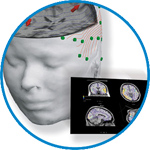- Home
- About ANT
-
Products

asa
asa is a highly flexible EEG/ERP and MEG analysis package with a variety of source reconstruction, signal analysis and MRI processing features.
.jpg)
eego mylab
The new frontier in multimodal brain research. With up to 16 kHz sampling rate, 256 EEG channels and unique software features, eego mylab gives you an unprecedented in-depth understanding of the human brain.

eego sports
eego sports offers complete freedom to collect high-density EEG data, bipolar EMG signals, and a variety of physiological sensor data, wherever and whenever required, with publish quality data in less than 15 minutes!

waveguard net
The waveguard net sets a new standard for research applications requiring high-density EEG data acquisition with quick preparation time, high flexibility, and subject comfort.

visor2
Our new and upgraded visor2 solutions integrate all the latest technologies for navigated rTMS, dual-coil navigation support, EEG-TMS recordings and pre-surgical evaluation for the highest quality in research and clinical procedures.

powerMAG ANT
The PowerMAG ANT 100 rTMS stimulator is designed for the specific needs of high-end TMS applications. Powerful high-frequency TMS as well as high precise single pulse and repetitive pulse protocols are combined in one single device.

xensor
xensor offers the solution for digitization of 3D electrode positions. xensor takes care of the whole procedure; it records, visualizes and stores positions acquired with a dedicated digitizer.

waveguard original
waveguard original is the cap solution for EEG measurements compatible with fMRI, MEG and TMS system. Use of active shielding guarantees performance in even the most demanding environments.

waveguard connect
waveguard connect EEG caps are a perfect match for hospitals and institutes aiming at reliable EEG, maximum uptime and great patient comfort! For optimal signal quality, the electrodes are made of pure, solid tin.

waveguard touch
waveguard touch is a dry electrode EEG cap. The unique Ag/AgCl coated soft polymer electrodes provide stable, research-grade EEG signals while maintaining subject comfort. The combination of these innovative dry electrodes and the industry-leading waveguard cap makes waveguard touch the best solution for dry EEG.

smartmove
smartmove allows planning of a complete TMS session ahead by defining stimulation sites based on anatomical MRI information and functional information like fMRI, PET or EEG/MEG.
Stay - References
- Support
- Events
- News
- Contact Us
You are here
The Rapid Distraction of Attentional Resources toward the Source of Incongruent Stimulus Input during Multisensory Conflict
The Rapid Distraction of Attentional Resources toward the Source of Incongruent Stimulus Input during Multisensory Conflict
Neuroimaging work on multisensory conflict suggests that the relevant modality receives enhanced processing in the face of incongruency. However, the degree of stimulus processing in the irrelevant modality and the temporal cascade of the attentional modulations in either the relevant or irrelevant modalities are unknown. Here, we employed an audiovisual conflict paradigm with a sensory probe in the task-irrelevant modality (vision) to gauge the attentional allocation to that modality. ERPs were recorded as participants attended to and discriminated spoken auditory letters while ignoring simultaneous bilateral visual letter stimuli that were either fully congruent, fully incongruent, or partially incongruent (one side incongruent, one congruent) with the auditory stimulation. Half of the audiovisual letter stimuli were followed 500–700 msec later by a bilateral visual probe stimulus. ERPs to the multisensory stimuli showed an incongruency effect (fully incongruent versus fully congruent) of an enhanced, centrally distributed, negative-polarity wave starting  250 msec. Moreover, the sensory ERP components to the visual probes were larger following fully incongruent versus fully congruent multisensory stimuli, with these enhancements greatest on fully incongruent trials with the slowest RTs. In addition, on the slowest-response partially incongruent trials, the P2 sensory component to the visual probes was larger contralateral to the preceding incongruent visual stimulus. These data suggest that, in response to conflicting multisensory stimulus input, the initial cognitive effect is a capture of attention by the incongruent irrelevant-modality input, pulling neural processing resources toward that modality, resulting in rapid enhancement, rather than rapid suppression, of that input.
250 msec. Moreover, the sensory ERP components to the visual probes were larger following fully incongruent versus fully congruent multisensory stimuli, with these enhancements greatest on fully incongruent trials with the slowest RTs. In addition, on the slowest-response partially incongruent trials, the P2 sensory component to the visual probes was larger contralateral to the preceding incongruent visual stimulus. These data suggest that, in response to conflicting multisensory stimulus input, the initial cognitive effect is a capture of attention by the incongruent irrelevant-modality input, pulling neural processing resources toward that modality, resulting in rapid enhancement, rather than rapid suppression, of that input.

 Read more
Read more.jpg)




